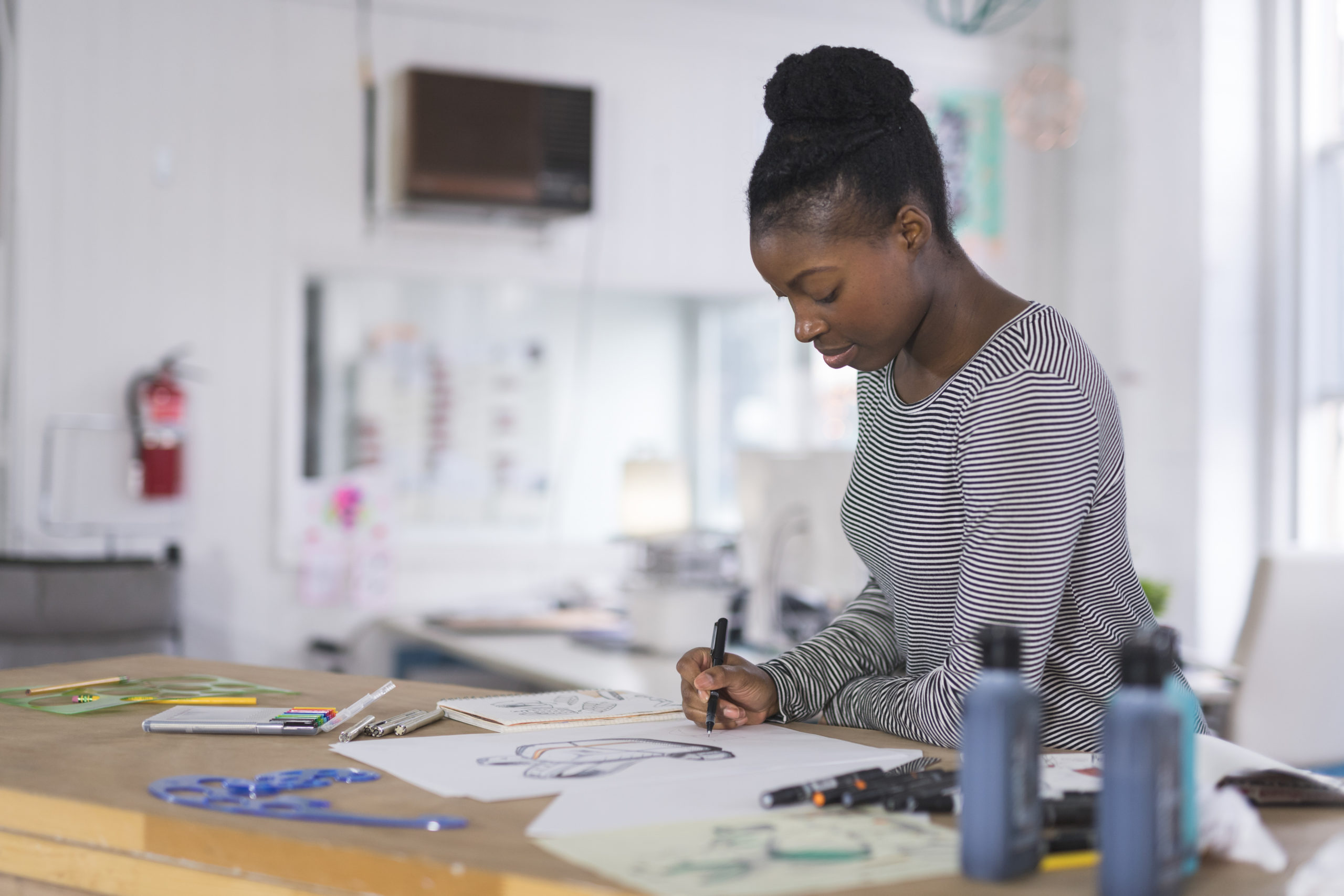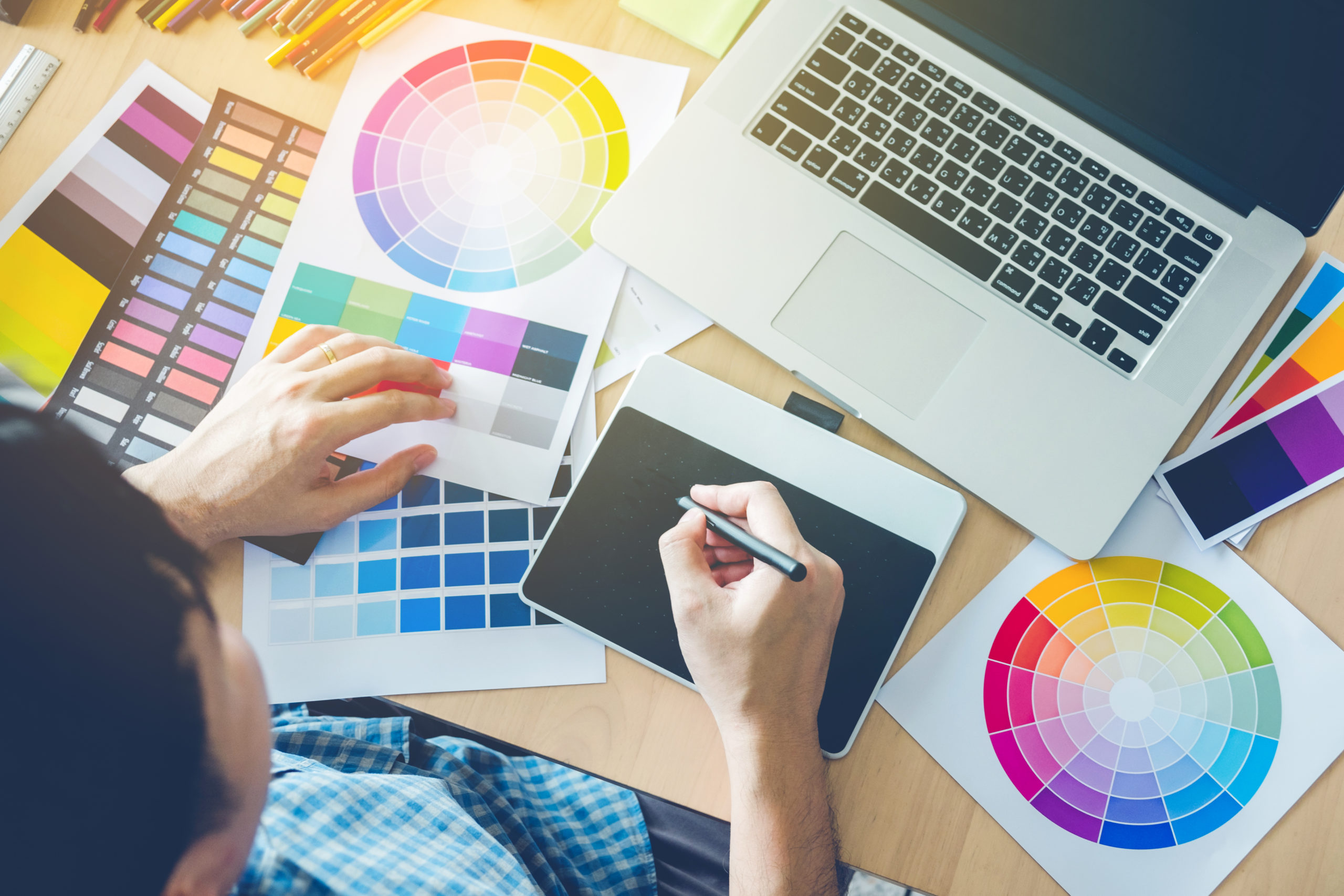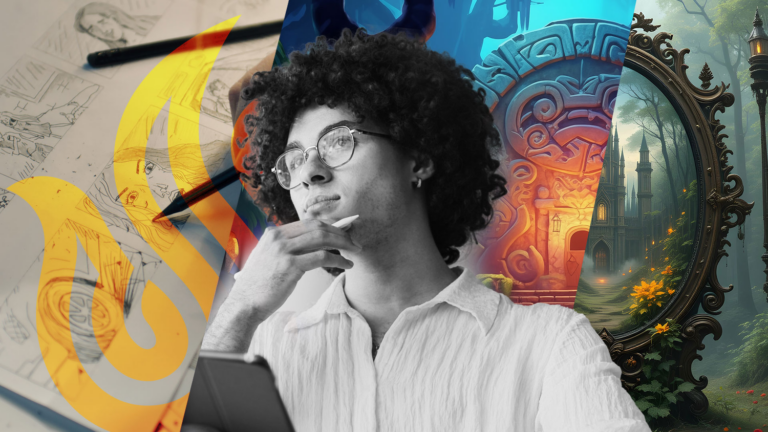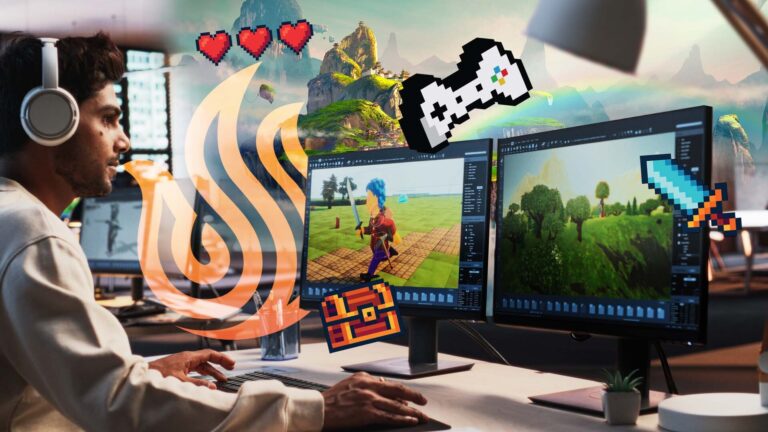A Concept artist does everything from sketching and imaging characters to creating entire works of animation for Video games, VFX for films and advertising
Artistic skill and a huge imagination are some of the main traits of a Concept Artist. Creating environments, people and creatures take a whole lot of originality. Concept artists’ are typically provided a brief that will give them some direction on the overall concept. They then will create sketches of the environments and characters. Tight time frames are the norm for a Concept artist. You will have a valuable set of skills that works across various areas of visual media such as film, animation and even comic books.
 A graphic designer sketches out prototypes for an idea onto paper. She is using a pen and leaning over her desk to concentrate. There are various pens, papers, and art supplies setting on the desk. Light is coming in from large exterior windows in the background.
A graphic designer sketches out prototypes for an idea onto paper. She is using a pen and leaning over her desk to concentrate. There are various pens, papers, and art supplies setting on the desk. Light is coming in from large exterior windows in the background.
Types of concept art
- environmental – creating detailed scenes and worlds, including indoor, outdoor and imaginary settings.
- creature – illustrating non-human characters
- character – specializing in producing mainly human characters
As a concept artist, you’ll need to:
- interpret briefs
- pitch your ideas to clients and design team
- create designs in 2D and 3D through drawing and painting
- Quickly draft detailed drawings or paintings of vehicles, props, buildings, environments, and characters
- create spec sheets, noting dimensions and details
- Solid understanding and ability in artistic fundamentals – such as perspective, composition, color and light theory, form, shape, and texture

What to expect
- Working environments tend to be relaxed and sociable to encourage collaborative working and creativity.
- You could work for yourself on a freelance basis, or you could be employed by a company.
- You will have to be comfortable having your work frequently critiqued and in some cases scrutinized.
Qualifications
It is essential to have a strong portfolio, as this will be the employer’s focus when making hiring decisions. A good concept artist’s portfolio should demonstrate an understanding of key design principles and an excellent grasp of fundamental art skills. The use of creative software packages is also highly sought-after, so degrees incorporating the use of these will be valuable. Degrees that demonstrate core artistic principles and experience with creative software will give you a competitive edge, especially:
- fine art/drawing/painting
- illustration
- animation
- graphic design
- games design/art.
How to become a concept artist
Most concept artists start their career in an entry-level creative position, but once working in this capacity, you can expect to be promoted fairly quickly (often within a year) if you show promise. This is usually into a junior concept artist role, or a role involving some concept artwork. In the junior concept artist role, you’ll have the opportunity to continue building your industry knowledge, skills, portfolio, and contacts. Some concept artists choose to remain at this stage of their career for many years, advancing their work by gaining more high-profile or larger projects and clients as their skills and reputation develop. Others may move into other areas of pre- and post-production to diversify their skills and career options.
Alternatively, you could progress your career by seeking lead/senior/principal concept artist roles. These roles will include leadership and management responsibilities, often including project management, scoping and mentoring duties. To work in a more senior role, you may need around seven to ten years’ experience – however, many employers focus on the success of the projects you’ve worked on and the strength of your portfolio to gauge experience at this level.
Employers
Opportunities for concept artists are almost exclusively found in the private sector. The majority of advertised positions exist in the video games industry, but many other types of the company also hire concept artists – including:
- animation studios
- film and television studios
- art departments across all industries
- creative agencies
- illustration/ design studios
- app developers
- advertising and marketing agencies
- publishing houses.
The fact that self-employment is common in this industry, combined with the breadth of companies that concept artists work with, means that contracts are plentiful and freelancers do not tend to struggle to find work in this field. Freelance concept artists in this field vary in length depending on the project but tend to be between two weeks and three months long. Freelance concept artists work allows you to select projects that suit your style and area of interest, but the work is less secure.
Equipment for Beginners
Starting with traditional tools can allow you to stay away from the complications of software and computer accessories. All you need for basic drawing is some printer paper and a pencil. I prefer the Staedtler 2B pack and it’s always a good idea to grab a box set because pencils get worn down quick. If you’d rather do sketchbooks the traditional Moleskine sketchbook is a great choice. There are also cheaper options like this Canson sketchbook with a spiral binding. Take a peek at our sketchbook buyer’s guide for a huge list of options. Lastly, you’ll want a pencil sharpener. If you want to dive right into digital there’s nothing wrong with that. It’s OK to do either because any form of drawing is better than none.
Choosing your first drawing tablet can be exhausting and it’s a much deeper topic than this guide. You can take a peek at our tablet reviews to see what’s out there, but for newbies, it’s better to keep things simple.
You can run the Intuos Pro for years and never need to upgrade until your progress is hindered by the limited features. It’s very affordable, durable, and truly all you need to get started with digital drawing/painting.
Ready to learn how to become a concept artist? If your passion is for visual effects, 2D or 3D animation, or concept art for video games or blockbuster films, this is the Digital Arts & Animation degree program for you.
University of Silicon Valley is uniquely poised to offer a meaningful and valuable education for 21st century students. We believe in an education that directly correlates with the work you’ll be doing after you graduate. Interested in learning more? Contact Us today.


